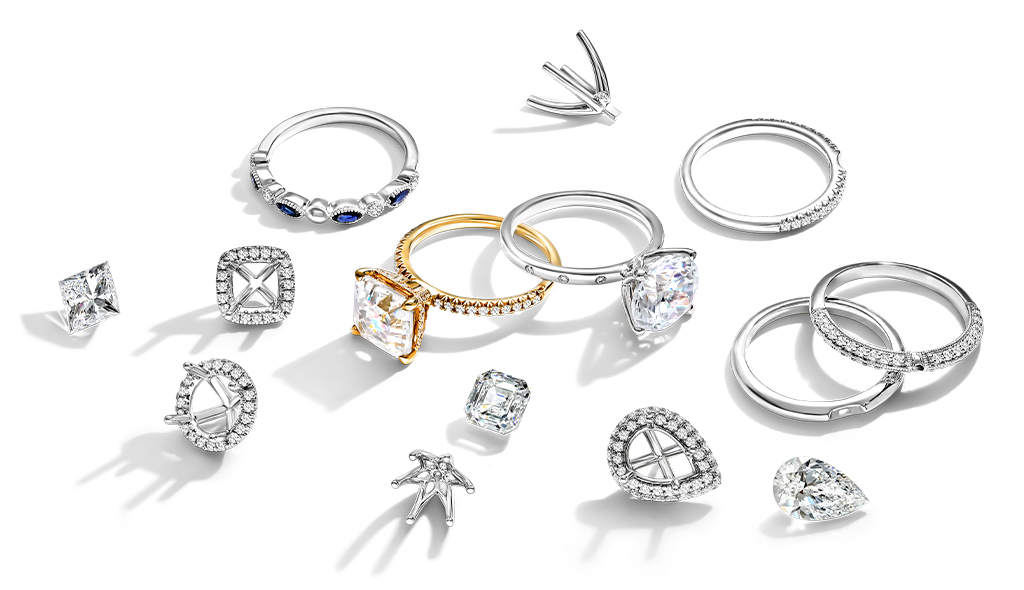Welcome to our Jewelry Education 101 guide! Diamonds are one of the most sought-after gemstones in the world. Whether you're planning to buy an engagement ring or a piece of diamond jewelry for a special occasion, it's important to have some basic knowledge before making your purchase.
The 4 C's: Understanding Diamond Quality
When buying diamonds, it's crucial to know about the 4 C's: Cut, Clarity, Color, and Carat Weight. These factors determine the overall quality and value of a diamond.
Cut
The cut of a diamond refers to how well it has been shaped and faceted. A well-cut diamond reflects light beautifully, creating a dazzling sparkle. The cut is graded from Excellent to Poor, and a higher grade usually means a more brilliant diamond.
Clarity
Clarity measures the presence of internal and external flaws, known as inclusions and blemishes, respectively. Diamonds with fewer inclusions and blemishes are considered more valuable. The clarity scale ranges from Flawless to Included, with varying degrees in between.
Color
Color is an essential factor to consider when buying diamonds. The Gemological Institute of America (GIA) grades diamond color on a scale from D (colorless) to Z (light yellow or brown). Colorless diamonds are the most valuable and desirable.
Carat Weight
Carat weight refers to the size of a diamond. A carat is equal to 200 milligrams. Larger diamonds tend to be more rare and therefore more valuable, but the overall value also depends on the other 3 C's - cut, color, and clarity.

Diamond Certification
When purchasing a diamond, always look for a reputable certification. The GIA is known for its strict grading standards and is the most recognized and trusted certification in the industry.
Types of Diamond Settings
Understanding different diamond settings can help you choose the perfect style for your jewelry piece. Here are a few common settings:
- Prong setting: This setting uses metal claws to hold the diamond in place, allowing maximum light exposure from all angles.
- Bezel setting: The diamond is surrounded by a metal rim, providing excellent protection and a modern, sleek look.
- Pave setting: Tiny diamonds are set closely together, creating an appearance of a "paved" surface and adding extra sparkle.
- Channel setting: Diamonds are set between two metal walls, flush with the metal surface, ensuring a smooth and secure setting.
Understanding Diamond Shapes
Diamonds come in various shapes, and choosing the right shape is crucial for the overall appearance of the jewelry piece. Some popular diamond shapes include:
| Diamond Shape | Description |
|---|---|
| Round Brilliant | The most popular diamond shape, known for its excellent light performance and maximum sparkle. |
| Princess | A square or rectangular-shaped diamond with pointed corners, offering a contemporary and elegant appearance. |
| Emerald | A rectangular-shaped diamond with beveled corners, emphasizing clarity and showcasing a unique, step-cut faceting style. |
| Cushion | A square or rectangular-shaped diamond with rounded corners, featuring large facets for enhanced brilliance. |
| Marquise | An elongated diamond with pointed ends, creating a unique and dramatic look. |
| Oval | An elongated, symmetrical diamond shape that offers great brilliance similar to the round brilliant shape. |

Credit: www.jewelmore.com
Budget Considerations
Before buying diamonds, it's essential to set a budget that works for you. Diamonds come in various price ranges, and determining your budget will help you narrow down your options and prevent overspending.
Remember, while larger diamonds may seem more impressive, focusing on the quality of the diamond (the 4 C's) often yields a more stunning and valuable piece of jewelry.
Frequently Asked Questions For Jewelry Education 101: Everything You Need To Know Before Buying Diamonds
Are Diamonds Always White Or Clear?
No, diamonds can come in various colors such as yellow, brown, and even rare shades like blue or pink.
How Do I Determine A Diamond's Quality?
A diamond's quality can be determined by examining its 4Cs - carat weight, cut grade, color grade, and clarity grade.
What Is A Diamond's Carat Weight?
A diamond's carat weight refers to how much it weighs, with one carat equivalent to 0. 2 grams.
What Is The Ideal Diamond Cut?
The ideal diamond cut is one that maximizes its brilliance, fire, and scintillation by reflecting and refracting light effectively.
Conclusion
Buying diamonds is an exciting and significant investment. By understanding the 4 C's, diamond certifications, diamond settings, shapes, and budget considerations, you can make an informed decision and find the perfect diamond jewelry that will be cherished for a lifetime.
Indulge in sophistication and grace with JewelMore's curated range of radiant diamonds. Shop now at www.jewelmore.com and add a touch of brilliance to your ensemble.
